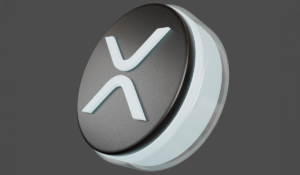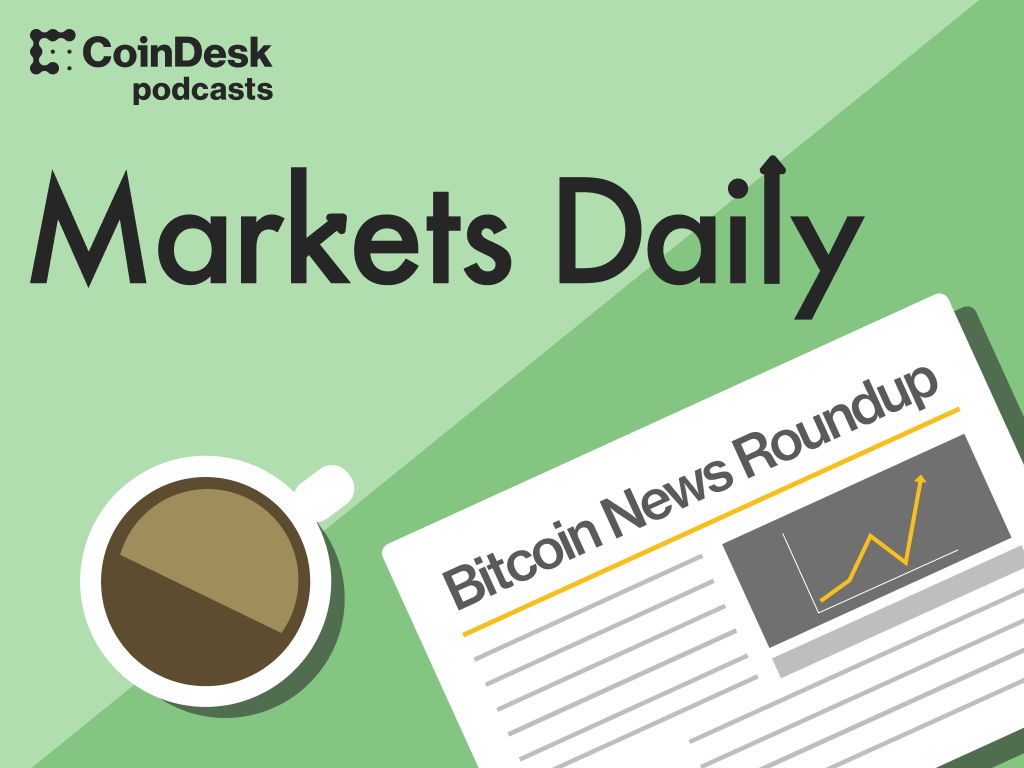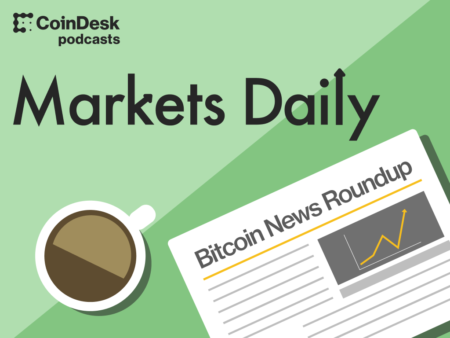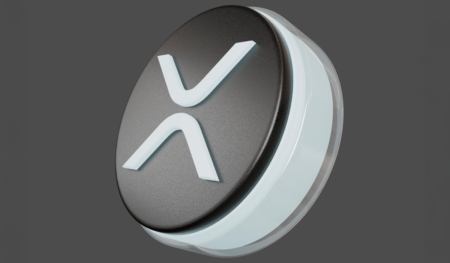Today’s episode is sponsored by CME Group and PayPal.
To get the show every day, follow the podcast here.
Today’s Stories:
A Physical Dogecoin Could Reach the Moon in December
(WMT) Walmart Lifts Profit Outlook, Stays Cautious on US Consumers – Bloomberg
Target (TGT) Profit Blows Past Expectations Amid Leaner Inventories – Bloomberg
Home Depot (HD) Narrows Guidance for Full Year Profit, Revenue – Bloomberg
From our sponsors:
CME Group Cryptocurrency futures and options provide market-leading liquidity for bitcoin and ether trading. These cash-settled contracts give full exposure to crypto performance without the hassle of holding the physical position. No digital wallet? No problem. Trade nearly 24/7 in a transparent, CFTC-regulated market. Visit cmegroup.com/crypto to learn more.
Disclaimer:
This communication is not directed to investors located in any particular jurisdiction and is not intended to be accessed by recipients based in jurisdictions in which distribution is not permitted. The information herein should not be considered investment advice or the results of actual market experience. Past results are not necessarily indicative of future performance. Trading derivatives products involves the risk of loss. Please consider carefully whether futures or options are appropriate to your financial situation.
–
PYUSD, a stablecoin made for Payments. 1USD = 1PYUSD.
Introducing PayPal’s new digital currency, PayPal USD (PYUSD), a stablecoin backed by U.S. dollar deposits, U.S. Treasuries and similar cash equivalents. Buy, sell, hold and transfer it in our app or site and explore Web3 with a payments brand that has been trusted for over 20 years.
Get started now at paypal.com/pyusd.
This episode was hosted by Noelle Acheson. “Markets Daily” is executive produced by Jared Schwartz and produced and edited by Eleanor Pahl. All original music by Doc Blust and Colin Mealey.
Audio Transcript: This transcript has not been edited and may contain errors.
It’s Friday, November 17th, 2023 and this is Markets Daily from CoinDesk. My name is Noelle Acheson, CoinDesk collaborator and author of the Crypto is Macro Now newsletter on Substack. On today’s show we’re talking about consumer signals, energy prices, market moves, ETFs and more. So you don’t miss an episode, be sure to follow the podcast on your platform of choice, and turn on notifications. And just a reminder, CoinDesk is a news source and does not provide investment advice.
Now, a markets roundup.
Crypto markets are looking weak today as traders catch their breath after a pretty active week. According to CoinDesk Indices, at 9 a.m. Eastern time this morning, bitcoin was down 1.3% over the past 24 hours, trading at 36,372 dollars. Ether is down just over 4%, trading at 1,954 dollars.
Elsewhere, Solana and Polygon are down 8%, Avalanche is down 7%, and Chainlink down 6%. Dogecoin is bucking the trend with a 4% rise, possibly because it seems we are literally sending dogecoin to the moon. Apparently a physical dogecoin will be on a lunar lander scheduled to take off next month. Let it never be said that the crypto community doesn’t have a sense of humor.
In macro indicators, I want to bring up Walmart’s Q3 results. This is not to analyze the earnings or comment on the stock price, that’s not the focus of this podcast. It’s to highlight how comments from industry leaders can give off key signals about the economy, and therefore also the likely direction of monetary policy and market liquidity.
So, Walmart.
Yesterday, the mega retailer reported Q3 earnings that didn’t raise many eyebrows. What was interesting was the executive comments. Chief Financial Officer John Rainey said there was a sharp drop in sales during the last two weeks of the fiscal third quarter that ended on October 31st. It’s odd to have a drop in sales just before Halloween, but Rainey pointed to higher interest rates, dwindling savings and the hit of student loan repayments. In other words, the consumer is hurting.
It’s not just Walmart that is flashing warning signs this week. On Wednesday, Target reported its results, which tell a similar story. The big-box retailer’s same-store sales dropped by almost 5%, the second-largest decline since the depths of the Great Financial Crisis in 2009. If you’re curious, the largest decline was Q2’s 5.4% drop. On Tuesday, Home Depot said that same-store sales will probably drop 4% this fiscal year, which is expected to trigger the first overall sales drop since 2010.
All of this is in line with the drop in U.S. retail sales that we saw on Tuesday, the first negative result since April. And this is relevant because consumer spending makes up around 70% of U.S. GDP.
So, you won’t hear me talking about individual stocks often on this podcast. When you do, it’ll be because of bigger picture signals beyond earnings or stock price movements. Watching the big retailers is worthwhile, for what they can tell us about consumer behavior, which is something the Fed is definitely keeping an eye on.
In stocks, the main U.S. indices were largely flat yesterday as expectations of rate cuts are being tempered by the flood of public statements from Fed officials. The coordinated message is no rate cuts any time soon, and another hike is still on the table. As I discussed in yesterday’s episode, the market is not buying it yet, but it does look like it’s starting to have doubts. Nevertheless, the U.S. 10-year yield has continued dropping, and is currently just over 4.4%. Futures this morning are pointing to a moderately positive opening for stocks.
In Europe, sentiment was weak yesterday, with the FTSE 100 losing one percent, and the Eurostoxx 600 down seven tenths. Germany’s DAX index bucked the trend with an increase of two tenths. This morning, things are looking decidedly more cheerful, with all the main indices up almost 1%.
In Asia, a sharp drop in Alibaba and mounting concerns about China’s economic growth dragged the Hang Seng index down more than 2% today. The Shanghai Composite index was more resilient, closing slightly higher, while Japan’s Nikkei index climbed almost half a percent.
In commodities, oil is heading down fast. The Brent Crude benchmark dropped almost 5% yesterday to four-month lows, making it officially now in a bear market. The conventional definition of a bear market is more than 20% off local highs.
The reasons for the slump have many layers. There’s growing concern around demand as the global economy slows. Supply fears stemming from the conflict in the Middle East are easing, and shipments from Guyana and the North Sea are set to climb next month. U.S. inventories are strong, and U.S. exports have been surging. And there are some technical factors: selling yesterday accelerated once the price dropped below $80 a barrel, suggesting some programmed trades.
Oil producers and traders must be hurting, but the good news is that lower energy prices, should they hold, would be a huge help in the battle against inflation. Earlier today, the Brent Crude benchmark was bouncing slightly, up 1.7% to trade at 79 dollars and 23 cents per barrel.
Gold climbed more than one percent yesterday and is continuing to rise today, up almost two tenths to trade at 1985 dollars per ounce.
Stay with us – after the break we’re going to look at spot ETFs and why the impact may not be the same for ether as for bitcoin.
Welcome back! In this section, on Fridays I tackle listener questions – thanks for sending them in, and please keep them coming! It’s really helpful for me to know what you’re interested in hearing more about.
Today’s question is: Which asset will benefit more from a US spot ETF, bitcoin or ether?
It’s a question that only a few of you have asked, but I’ve chosen this one because it’s an interesting topic that highlights a key difference between the two assets.
An obvious and relatively simple answer would be ether, since it has not had the speculative run-up that bitcoin has had so far this year. Bitcoin’s year-to-date performance is over 120%, while ether is lagging behind with a still substantial 68%. Also, bitcoin is down 47% from its all-time high, while ether is 56% down. So, in theory, ether has some catching up to do, and the listing of a spot ether ETF might just be the catalyst for that catch-up.
But there’s another way to look at this that comes to a different conclusion.
It involves looking at the investment thesis for each asset. I addressed the key differences in the Markets Daily of the third of November, if you’re interested in some background. Today’s take involves the ETF impact. And it’s this:
Many investors see bitcoin as a store of value. Their plan is to buy bitcoin and hold it, and many will find it easier to do this via an ETF. It may not be as seizure-resistant or decentralized as self-custody, but it does have a convenience advantage. Basically, an ETF doesn’t change the intrinsic investment thesis of bitcoin.
But ether is meant to be used. It is the fuel for the Ethereum ecosystem, it can be staked to help validate consensus, it powers decentralized applications, it is used to pay for NFTs or access privileges, it has a wide range of uses. It can’t really be used if it’s sitting in an ETF.
What’s more, investors that aren’t planning on using their ether could choose to stake it and earn more ether as a reward. BlackRock’s spot ether ETF proposal makes no mention of staking, which is not a surprise since the SEC has said in the past they think staking is an investment contract. I’m not a lawyer, but I imagine there could be some legal issues involved with including staking in an ETF.
So, an ETF doesn’t really gel with the underlying thesis for ether, like it does for bitcoin. Of course, many investors may see ether as a store of value, happy to just hold it rather than use it. After all, ether’s net new supply has been negative for most of this year, as the amount burned through transaction fees has exceeded the amount of new issuance through staking rewards.
But the more investors do this rather than use ether, the lower the total amount burned through transaction fees, and the higher the net new supply, which weakens its store of value thesis. It’s recursive, I know, but that’s one of the many unique and fascinating things about the asset. And anyway, like I mentioned, investors who want to just hold ether would be better off staking it and earning a reward on top of any price appreciation.
So, a spot ETF would probably be good for the price of ether in that it would enable registered advisors to offer it to clients, and ether would become accessible to a wider range of institutions. And, many investors are unfortunately still unaware that bitcoin and ether don’t have the same characteristics. For them, crypto assets fall into the same bucket, and if one has underperformed, that makes it more attractive. But the total effect could end up being more muted than for bitcoin simply because ether is meant to be used, not parked in a non-yielding product.
And as the market matures, hopefully more people will come to understand that not all crypto assets share the same characteristics, and each asset will come to be appreciated for the factors that make it different.
Read the full article here









